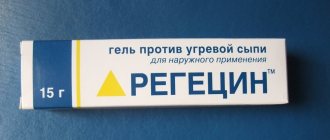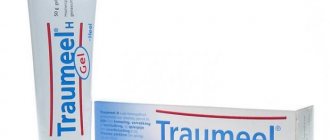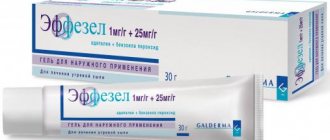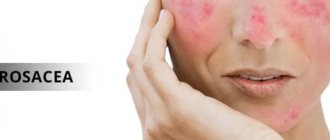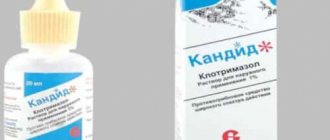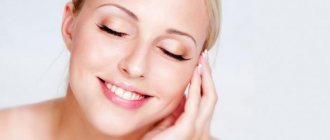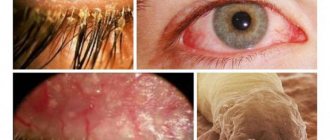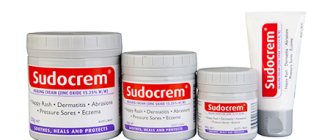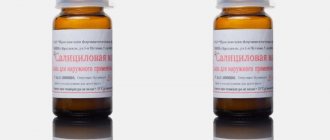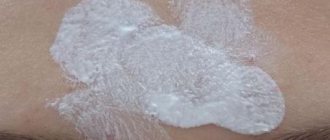One of the most common skin problems is acne. They are not only found in teenagers, 40% of adults also suffer from acne. That is why various external remedies to help cope with this problem are so popular. Anti-acne ointments with antibiotics are considered especially effective. They help eliminate the cause of their appearance and act quickly.
When is an antibiotic prescribed for facial acne?
Antibiotics for facial acne are prescribed in the following cases:
- For acne that is resistant to impeccable facial hygiene and care using special gels, foams and scrubs;
- For long-term troubling acne , when the problem is persistent for many years;
- With frequent relapses of the appearance of profuse acne;
- In cases of preparing facial skin for cosmetic interventions , for example, mechanical, ultrasound and other types of cleansing and peeling;
- In order to prevent infection or suppress existing inflammation of both low and high intensity.
There are two main ways to take antibiotics for acne:
- Local is primary. It is preferable, since with a targeted effect on inflammatory elements of the skin, the effect of the drug is directed exclusively at this focus, and the side effects of a particular antibiotic are practically reduced to zero;
- Oral - prescribed in more severe cases, when the acne problem has been bothering you for a long time without periods of remission. Also, oral administration of these drugs is switched to if local application is ineffective. It is also possible to combine antibiotics locally and orally for a more powerful effect. However, in this case, along with the high effectiveness of therapy, side effects of drugs appear and appear, since the effect on the body in this case is systemic, that is, the active substance is carried through the blood to organs and tissues, adversely affecting them.
Existing forms of release and composition
Clindamycin is available in the following forms:
- Vaginal cream: supplied to medical institutions in a tube with applicators. The composition includes the previously mentioned active component in the form of phosphate and excipients: castor oil, propylene glycol, sodium benzoate, polyethylene oxide-1500, emulsifier No. 1. The ointment has a specific odor and is white or white with a creamy tint.
- Gelatin capsules: sold in 16 pcs. in a pack and have a purple body with a red lid. The medication contains the hydrochloride of the active substance and additional ingredients: magnesium stearate, lactose monohydrate, talc, corn starch.
- Glass ampoules with a clear or yellowish solution for injection (i.m. and i.v.): packaged in plastic packages and then in cardboard packs (10 pieces each). The drug contains an active substance.
- Vaginal suppositories: available in cell packs (3 suppositories each), placed in a cardboard box. The medicine is distinguished by its cylindrical shape and white or white with a yellowish tint.
Gel containing the substance clindamycin has different names and is supplied to medical institutions in aluminum tubes of 15 or 30 g. The maximum concentration of the component in question in a product for external use reaches 1%.
Action of the antibiotic
There are two types of antibacterial action:
- Bactericidal - the antibiotic causes the death of bacteria;
- Bacteriostatic - the effect of the drug stops the growth of excess microorganisms.
When treating acne on the face, antibiotics with the second type of action are most in demand.
In turn, both bactericidal and bacteriostatic drugs can realize their effects through different mechanisms:
- Some affect the proteins of the bacterial cell wall , causing its destruction and the death of the microorganisms themselves;
- Others are able to bind to the ribosomes of bacterial cells and block the synthesis of microbial proteins, which prevents further growth of amino acid chains and cell proliferation.
It should be noted that only a doctor should figure out which antibiotic is suitable for a particular person in a particular case.
Superficial amateur activities will not only bring no effect, but will certainly cause harm, since not a single dose of antibiotic will pass without leaving a trace on the body.
Contraindications
Contraindications for the use of bacteriostatic drugs include:
- individual intolerance to one or more components;
- liver or kidney dysfunction;
- bronchial asthma;
- ulcer, ulcerative colitis;
- an autoimmune disease that affects the neuromuscular junction;
- age up to 1 month;
- elderly age;
- pregnancy and lactation (except for external use).
Advantages and disadvantages of using antibiotics
| pros | Minuses |
| Impact directly on the etiological factor. If various cosmetic products and procedures act on acne as a symptom, then the antibiotic is aimed at fighting the bacteria that cause it | Lots of side effects |
| Power and speed of action with the correct selection of the drug | Toxic effects on the skin or the entire body in excess dosages |
| Long-term effect and absence of relapses with the correct comprehensive treatment tactics | Formation of bacterial resistance to the selected antibiotic when allowing a break in the course of therapy |
| Impact on other latent infections in the body | Inconveniences associated with limiting the use of decorative cosmetic products in the case of a high frequency of use of local forms of antibiotics and deviations from the usual diet |
Danger of addiction
An antibiotic must be taken or an antibiotic applied for a certain number of days (usually 7-14), a certain number of times per day, and often at the same hours.
What are the consequences of deviation from this schedule:
- The resistance of the attacked bacteria to the drug and the effect are lost . Bacteria manage to form protective enzymatic mechanisms during the absence of the next timely dose of the drug, form new compounds that no longer react with this antibiotic;
- There is no further point in continuing the course of this drug , which is complemented by a waste of wasted time and money;
- There is a need to change the drug , which entails additional stress on the body and additional waste of money;
- Since the antibiotic of choice is always prescribed first , that is, the most suitable and balanced in terms of the ratio of all factors that influence the achievement of the best result in combination with maintaining human health as a whole, the next one may be more difficult for the body and bring a less vivid and rapid effect.
- In case of a possible relapse, the antibiotic of choice will no longer help.
Features of the use of antibiotics
The use of each antibiotic has its own characteristics:
- The dosage should be selected as accurately as possible . Dosages are calculated, as a rule, in the amount of micrograms or milligrams per 1 kilogram of human body weight and should be optimal, causing its pharmacological effect in precisely this quantity;
- The antibiotic should be selected taking into account the condition of the entire organism as a whole; it is necessary to compare the diseases and conditions of the person with the side effects of the drug, for example, you should not prescribe nephrotoxic antibiotics to a person with diseases of the excretory system or antibiotics that impair the growth of bone tissue in children under 18 years of age;
- The third point echoes the first and is that the exact frequency of administration must be observed , in some cases even hourly (to prevent the occurrence of resistance, disruption of the natural biocenosis of the skin, secondary infection due to scratching irritated areas of the skin, etc.). This applies to both oral and local forms;
- When using antibiotics, you need to take into account their aggressive side effects in order to properly mitigate them.
Oral antibiotics
What antibiotics are usually prescribed for acne on the face?
Macrolide class
It has a bacteriostatic effect, binding to the large subunit of ribosomes of bacterial cells, disrupting the process of bacterial protein biosynthesis, that is, preventing their growth.
This group of drugs is one of the strongest for purulent-inflammatory skin diseases and has a minimum of absolute contraindications and side effects.
Main macrolides used:
- Vilprafen - cost from 540 rubles ;
- Erythromycin - average cost 90 rubles .
Vilprafen Erythromycin
Tetracycline class
They have a wide spectrum of action and are very powerful in action. Many known microorganisms are sensitive to tetracyclines, including propionobacteria, which cause acne; they quickly and easily penetrate the organs and biological fluids of the body.
Such drugs are definitely worth considering for use in adults, but they are contraindicated for children, as they disrupt the synthesis and development of bone tissue, which is in the stage of active formation in a child.
It is not recommended to take tetracyclines in sunlight due to the photosensitivity they cause.
The most popular tetracyclines:
- Doxycycline - average cost 30 rubles ;
- Tetracycline - average cost 50 rubles ;
- Minolexin - average cost 600 rubles .
Doxycycline Tetracycline Minolexin
Lincosamide class
This group of antibiotics has the same mechanism of action as the group of macrolides and also has a bacteriostatic effect.
However, in high dosages and against highly sensitive microbes, it begins to act bactericidal and also have a slight antiprotozoal effect.
Contraindications for prescribing lincosamides are few, but must nevertheless be taken into account. It is also worth paying attention to the fact that these drugs cannot be combined with some others, for example, barbiturates, B vitamins and ampicillin.
Lincosamides have a wide range of side effects, which should be paid special attention to before taking a course.
Lincosamide preparations:
- Clindamycin - average cost 160 rubles ;
- Lincomycin - average cost 120 rubles .
Clindamycin Lincomycin
Antibiotics for acne and pimples. Understanding tablets, capsules and drops
Before giving a list of medications for oral administration, it is necessary to warn about possible “side effects” :
- Treatment of acne with antibiotics and tablets can lead to problems with the gastrointestinal tract and intestinal microflora.
- Antibiotics weaken the body's natural defenses, making you more susceptible to viruses, colds, acute respiratory viral infections and other diseases.
- The substances suppress the functions of the liver and kidneys, which can result in even more acne and acne.
- Treatment of acne with antibiotics is contraindicated in persons under 12 years of age.
Therefore, before purchasing the drug, consult a specialist! Treatment of acne with antibiotics should be professional and effective, and not destroy your immunity.
3 groups of acne medications:
- Macrolides . These include erythromycin and josamycin.
- Tetracyclines . These may be doxycycline and tetracycline (as well as drugs under other trade names and brands, but having the same composition).
- Lincosamines . Includes the compounds lincomycin and clindamycin.
Erythromycin - “mild” fight against acne and acne
The anti-acne medicine has a gentle effect (so much so that it can even be taken by pregnant women).
The product does not cause severe side effects , does not cause headaches, nausea, or weakness.
But at the same time, it has another disadvantage : bacteria quickly get used to the antibiotic, and it stops working on them.
How to take erythromycin?
For adults, the dose is set at 1,000 mg (but it all depends on the degree of acne, oily skin and other individual characteristics of the patient).
Doctors recommend taking tablets 1 hour before meals 3-4 times a day. The course of treatment is 14 days, after which you need to see the effectiveness and decide what to do next.
It is of no use for you to take erythromycin for acne if you suffer from high stomach acidity. Do not take the tablets with dairy products (they neutralize the effectiveness of the drug).
Josamycin (vilprafen) for acne and acne - a “powerful weapon” against skin problems
The antibiotic can only be taken by persons over 14 years of age on the recommendation of a doctor.
The drug is known for severe side effects , which can include diarrhea, nausea, weakness and dizziness.
Antibiotics for external use
Preparations for external use are available in the form of gels, ointments, liniments, liquids and lotions.
The most popular of them are the following:
- Solution for external use Zerkalin is the active ingredient clindamycin from the lincosamide group. It inhibits protein synthesis in propionobacteria cells, reducing the amount of fatty acids on the skin. Most often it is well tolerated, only occasionally causing itching, burning and reflex sebum secretion. But you should not use Zerkalin with other exfoliating or abrasive substances, as there is a high probability of a cumulative irritating effect. Average cost 370 rubles ;
- Zinerit is a combination drug that realizes its effect by combining the bacteriostatic antibiotic erythromycin and the regenerating salt - zinc acetate. Erythromycin helps stop the proliferation of bacteria by suppressing protein biosynthesis on the ribosomes of their cells and promoting the drying out of the pimple, and zinc acetate is a kind of “cleaner”, complementing the action of the antibiotic with a healing and smoothing effect. Zenerite should be applied to problem areas after morning and evening facial cleansing. Suitable for those whose acne problem is not too severe. Average cost 530 rubles ;
- Benzamycin gel - the effect is based on a mixture of active ingredients included in the product: erythromycin and benzoyl peroxide. Suitable for those who suffer from not too advanced forms of inflammatory rashes. The drug has a bacteriostatic and keratolytic (dissolving the keratinized layer of facial epithelial cells) effect. Benzamycin, in addition to inhibiting the growth of microorganisms, inhibits the functioning of the sebaceous apparatus of the facial skin, reducing the amount of sebum secreted onto its surface. The action of benzoyl peroxide complements the action of the antibiotic with its desquamation effect, that is, expelling part of the stratum corneum of the skin, renewing and refreshing it. Average cost 1300 rubles ;
- Metrogyl gel/injection solution - the active ingredient in these two forms of the drug is metronidazole. In this case, its antimicrobial and antiulcer effects are relevant. It will help in the case of long-maturing pimples, small pustules with a thin capsule, secondary infected elements that arise, for example, in the case of unsuccessful squeezing of a pimple and infection in combination with extensive trauma to healthy areas of the epidermis. The gel is applied to problem areas of the skin in the morning and before bed, after thoroughly cleansing the skin. The injection solution has also found wide application in medical cosmetology. It is most effective to apply it to the face after traumatic procedures, for example, cleansing, when it is not recommended to allow facial skin to come into contact with tap water and any skincare cleansers for several days. A hole is made in the plastic bottle with a clean needle in the neck area, from where it is squeezed onto a cotton pad. It should be applied to the entire surface of the face. This will prevent the development of infection on the wound surface of the face after cosmetic surgery. The average cost of the gel is 230 rubles , the solution - 25 rubles ;
- Sintomycin ointment - the active ingredient is a synthetic antibiotic D, L-chloramphenicol. It is especially effective in the second stage of the life cycle of a pimple, that is, during the period of absence of purulent inflammation. When the source of inflammation dries out, it accelerates the regeneration and epithelization of damaged skin. The average cost is 40 rubles .
Cheap ointments
Not everyone has the opportunity to buy medicines for 500-700 rubles. But among the cheap ointments for acne with antibiotics, there are also effective ones. They cost from 50 to 150 rubles and work no worse than expensive products.
- Metrogyl is a gel based on metronidazole. It has antimicrobial, antioxidant and anti-inflammatory effects. Normalizes the functioning of the sebaceous glands, accelerates regeneration. Used for acne and pink pimples.
- Erythromycin ointment contains a macrolide antibiotic. It has a bactericidal effect, helps with juvenile acne, pustular rashes, and furunculosis. Relieves inflammation and itching.
- Syntomycin ointment, the main active ingredient of which is chloramphenicol, has a complex effect. Castor oil in the composition softens the skin, fights dryness and flaking. Novocaine helps relieve soreness and itching.
- Tetracycline is a strong antibiotic. To treat acne, 3% ointment is used. Helps with purulent acne, furunculosis.
- Levomekol is a combination drug based on chloramphenicol and methyluracil. Destroys pathogenic microorganisms, relieves inflammation, accelerates tissue regeneration, and helps with purulent rashes. This antibiotic ointment is often used to heal acne.
- Hyoxysone contains oxytetracycline and hydrocortisone. In addition to being antimicrobial, it has an anti-inflammatory effect and relieves itching.
Antibiotic masks
Various masks, one of the components of which are antibiotics, have become widespread in medical cosmetology.
There are no contraindications to them, however, if allergies or itching occur, you should change the chosen antibiotic. The frequency and duration of use of all such masks is determined only by a doctor.
The most effective:
- Erythromycin - to prepare the mask, you need to crush 4 tablets of erythromycin, mix the resulting powder with two tablespoons of blue clay in a small container, add a certain amount of warm boiled water to obtain the consistency of a thin cream. Apply to face and leave until dry, rinse with water. This is the best option for oily skin with a lot of blackheads;
- Clindamycin - for the mask you will need 4 crushed clindamycin tablets, half a teaspoon of Dimexide concentrate, 100 ml of boiled warm water and baby powder. Mix Dimexide with water, then mix half of this solution with Clindamycin powder and add baby powder to a thick consistency. Apply to face for 10 minutes, rinse with water. Suitable for skin with a large number of large-focal inflammations;
- Metronidazole - pour a handful of baby powder into a metal or ceramic container, the size of about two to three heaped tablespoons. Then you should dilute the powder with an antibiotic solution. Pour a certain amount of Metrogyl from the hole in the bottle with the drug and mix until it reaches the consistency of sour cream. Apply the mixture to your face in a medium thickness layer and leave until dry. After that, without rinsing with water, wipe it off in the sink with a dry cotton pad. Wipe your face with alcohol lotion. Suitable for all skin types;
- Chlorhexidine - the mask recipe is similar to point “3”.
After using any mask with an antibiotic, you should wipe your face with a piece of ice.
Analogs
In gynecology, other vaginal products may be prescribed instead of Clindamycin. Among them:
- Dalatsin;
- Clindatop;
- Klindes;
- Klindovit;
- Clindacin.
In gynecology, Clindovit may be prescribed instead of Clindamycin.
The following capsules are noted as similar in functionality:
- Klimitsin;
- Dalatsin C;
- Klindafer;
- Pulxiprone;
- Clindahexal.
Similar medications for injection include:
- Dalacin C Phosphate;
- Zerkalin;
- Klimitsin.
Similar medications for injection include Zerkalin.
The most effective generic is Lincomycin.
How to extend the effect?
How can you prolong the effect of antibacterial therapy on acne? Of course, proper further facial care and regular visits to a cosmetologist, who, like no one else, will properly monitor the condition of the facial skin.
You need to adhere to the basic rules:
- Thorough morning and evening cleansing - tar soap is perfect, moisturizing and nourishing the face. It is important to immediately take care of hypoallergenic skin care products in order to prevent possible additional exposure to negative factors on the skin and loss of treatment time to combat the consequences of the caused allergy;
- Maintaining a healthy diet - maximum limitation or complete exclusion of unhealthy foods, such as fatty, spicy, spicy, sweet foods;
- Adequate fluid intake - preferably at least two liters per day;
- Monitoring the condition of the skin - at the onset of recurrent conditions, repeat the course of complex antibacterial therapy;
- Preventive cosmetic procedures during periods of remission under the supervision of a physician.
Side effects of antibiotics
Side effects of antibiotics most often occur when administered orally.
The most common of them:
- Hepatotoxicity - in particular, drug-induced hepatitis;
- Allergic reactions , including allergic urticaria;
- Changes in the qualitative composition of the blood - thrombocytopenia, leukopenia, anemia, azotemia;
- Neurological disorders - dizziness, excessive drowsiness with sufficient sleep, lethargy and sleep disturbances;
- Gastrointestinal tract function disorders - dyspeptic symptoms: nausea, loss of appetite, vomiting, inflammation of the wall of the esophagus and stomach, diarrhea, constipation, malabsorption syndrome, dysbacteriosis and pancreatitis;
- Accumulation in bone tissue - contributes to disruption of its formation in children;
- Hearing impairment and hypovitaminosis.
Side effects when applied topically:
Special attention should be paid to the effect of antibiotics on the digestive system. When taken orally, the drugs act systemically on the body, that is, not only the bacteria that cause acne are affected, but also other bacteria, especially intestinal ones.
The antibiotic introduces an imbalance in the intestinal normal flora, as a result of which the number of beneficial bacteria can decrease, while the population of opportunistic bacteria can increase, which is why their negative effect on human digestion and well-being begins to appear.
It is also possible to disrupt the function of the gastrointestinal tract due to the effect on both obligate bacteria and opportunistic bacteria, which also leads to various manifestations of dyspepsia and dysbiosis.
To correct this negative side of antibiotic therapy, your doctor may prescribe drugs that stimulate the growth of normal intestinal flora:
- Linex - available in capsule form, cost from 250 rubles ;
- Bifikol - available in the form of a dry powder for preparing a suspension, cost from 180 rubles ;
- Bifidumbacterin forte - available in capsule form, cost from 120 rubles ;
- Hilak forte - available in the form of drops for oral administration, cost from 240 rubles ;
- Enterol - used in powder form to prepare a suspension, cost from 220 rubles .
Side effects of clindamycin
The development of negative reactions from the body is possible.
From the musculoskeletal and connective tissue side
The appearance of systematic back pain.
Back pain may occur from taking the medicine.
Gastrointestinal tract
Some patients experience the following side effects from the digestive system:
- nausea and vomiting;
- diarrhea and abdominal discomfort;
- colitis;
- metallic taste (after intravenous administration of increased doses of the drug);
- inflammation of the mucous membrane of the esophagus (when using capsules);
- hyperbilirubinemia;
- increased activity of liver enzymes and bilirubin in blood plasma;
- disturbances in the functioning of the liver and jaundice (rare).
From the digestive system, some patients experience nausea and vomiting.
Blood-forming organs
In rare cases, there is a decrease in the number of leukocytes, neutrophil granulocytes and platelets in the blood.
From the cardiovascular system
With rapid intravenous administration of the drug, blood pressure may decrease, weakness and dizziness may appear.
Allergies
Possible allergic reactions include:
- hives;
- anaphylactic shock;
- fever;
- Quincke's edema;
- inflammation of the skin and mucous membranes (in isolated cases);
- erythema multiforme;
- anaphylactic shock (rare).
Possible allergic reactions include urticaria.
When using the gel, contact dermatitis and systemic side effects may develop. In the case of intravaginal administration, adverse reactions from the sensory organs occur: dizziness, vertigo.
Impact on the ability to operate machinery
If side effects regularly occur in the form of vomiting, allergic reactions, dizziness or decreased blood pressure, it is recommended to stop driving for the duration of treatment.
How are antibiotics different from antimicrobials?
Is it possible to use drugs on the packaging that say “antimicrobial”, “antimicrobial”, “antiseptic”, “disinfectant” in the treatment of acne? To understand this, you need to understand the difference between them and antibacterial substances.
Features of antiseptics:
- The effect of antimicrobial agents is not selective on all unicellular life forms (all fungi, bacteria and viruses);
- Antimicrobial agents have found their use in the disinfection of surgeon's hands , various surfaces and objects, and the treatment of open wounds;
- In the case of fighting acne, such remedies are permissible only in the case of treating an opened pimple with or without bleeding to prevent infection of the wound.
Differences between antibiotics:
- Affects bacteria only;
- The action can be aimed at both a large number and a small number of sensitive bacteria, which is more common in the treatment of acne.
